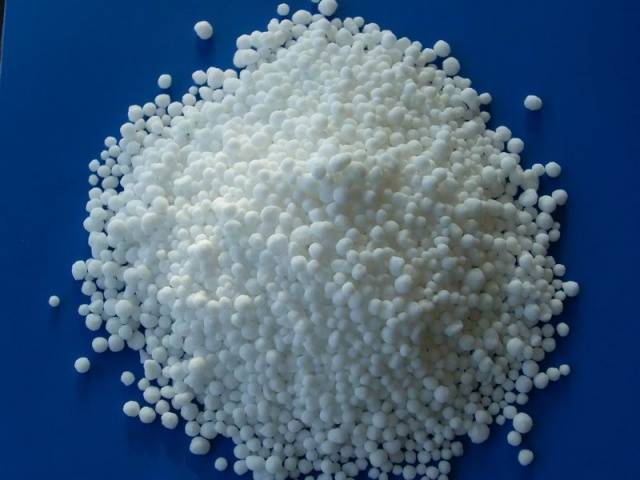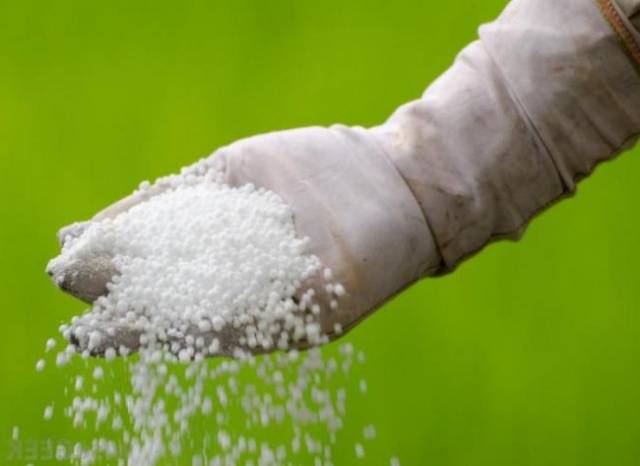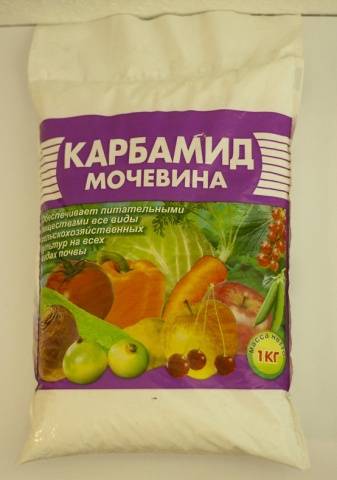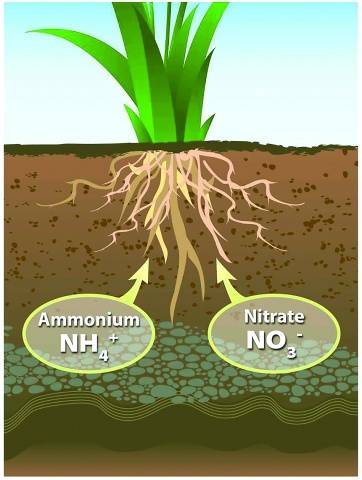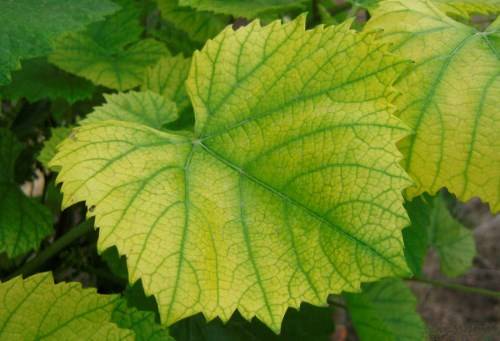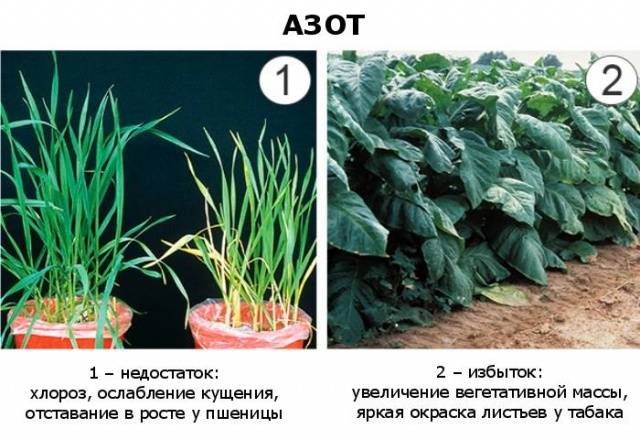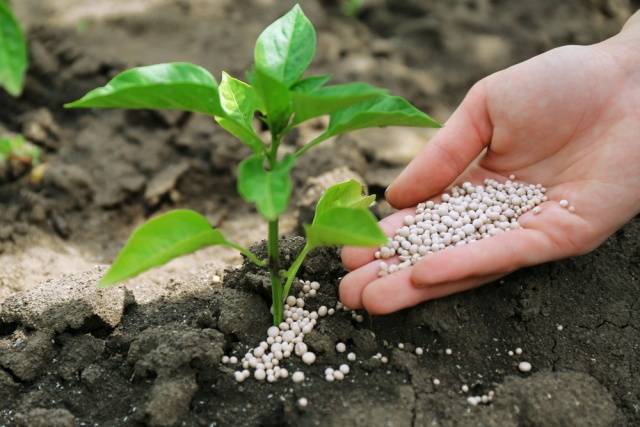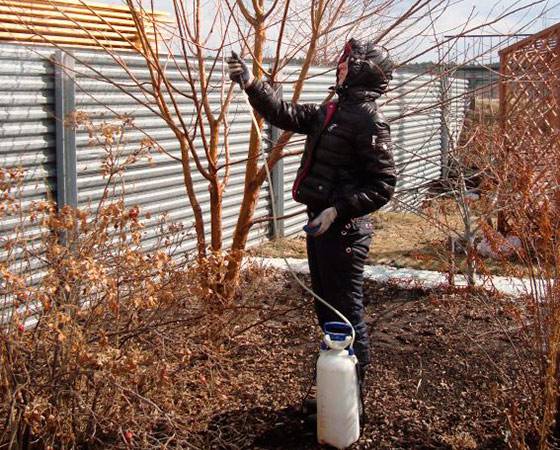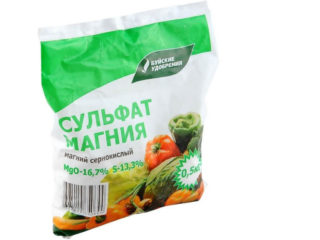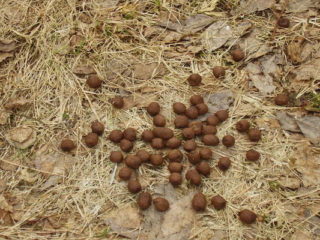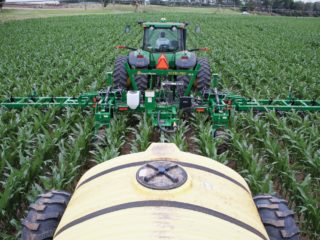Content
No matter how fertile the soil is, over time, with constant use and without fertilization, it is still depleted. This negatively affects the harvest. Therefore, sooner or later, you will have to start feeding. Urea is a fertilizer with a high nitrogen content, which is necessary for plants to grow and develop. The rules of use for different horticultural and horticultural crops will be discussed in the article.
Description and characteristics
This fertilizer is known to gardeners by two names - urea or carbamide.
Appearance
It is produced by any manufacturer in the form of round granules, the size of which ranges from 1-4 mm. They are light, white or transparent, odorless.
Physical properties
- Affects plants in dry and dissolved form.
- They dissolve well in water or soil after watering. The percentage of solubility depends on the temperature of the water and the environment.
- Besides water, urea can be dissolved in methanol, ethanol, isopropanol and other media.
- Forms compounds with organic and inorganic substances.
- Granules do not cake and do not stick together during storage, do not lose their properties.
Composition
Fertilizer urea is a complex chemical compound. It is a product of protein metabolism with a high concentration of nitrogen, the only mineral fertilizer in the world with such indicators.
Experts often call carbamide carbonic acid diamide. This chemical compound is synthesized from organic substances, has its own formula: (NH2)2CO. In urea, about half of the composition is directly nitrogen.
Urea is an excellent option for root and foliar feeding of garden and vegetable garden plants.
Advantages and disadvantages
Like any chemical compound, urea has its pros and cons. The advantages include the following:
- ease of assimilation by plants in the shortest possible time;
- suitable for foliar feeding, since it does not burn the green mass with the correct dosage;
- can be used on any soil.
- on irrigated areas, the assimilation result is increased.
If we talk about the shortcomings, then these are:
- with increased acidity of the soil, dolomite flour or other organic fertilizers must be added to increase the effect;
- a deviation of the dosage upward leads to a decrease in seed germination;
- urea is hygroscopic, therefore a dry room must be used for storage.
Instructions
Urea is a special kind of feeding that plants respond to instantly. Transformations occur very quickly due to the fact that bacteria in the soil process nitrogen and release ammonium carbonate. Since it is a gas, it decomposes in air in a matter of minutes. In order for the process to proceed more slowly, and urea to give the desired effect, it must be applied to a certain depth.
If we talk about urea as a fertilizer, then its use in the garden and in the garden is possible both in open and protected ground.
When using nitrogen fertilizer, carefully read the instructions for use on the package. It sets out in detail the norms that apply to garden and horticultural crops at different stages of plant cultivation.
Urea is added:
- As the main fertilizer before sowing, with an embedding of 4 centimeters to keep ammonia in the soil.
- As a top dressing when planting plants. In this case, a layer of soil must be laid between the root system and the fertilizer so that there is no burn. Potash fertilizers are added as an accompanying top dressing.
- To increase the nutrient content of the soil during the growing season.
- As foliar dressing for spraying plants. Work is carried out early in the morning or late in the evening.
Urea in dry form, as indicated in the instructions, it is advisable to add two weeks before planting the plants. The fact is that the granules contain buaret. With a high content of this substance, if it does not have time to decompose, the plants feel depressed.
Rules for the use of urea:
Determination of nitrogen deficiency
The introduction of any fertilizer, including urea, should not be spontaneous. Plants are fed when they really need it. After all, an excess of minerals in the soil is much more dangerous than a lack of them. Therefore, the plants are fed in strictly limited quantities. Fertilizing the soil, as they say, in reserve, is impossible under any circumstances.
An extraordinary feeding with urea can be carried out if the plants give peculiar signals.
Determine the lack of nitrogen by the following criteria:
- Garden or horticultural crops grow very slowly, they begin to suffer due to weakened immunity from diseases and pests.
- Shrubs and trees are distinguished by short and weak shoots.
- The leaf blades become smaller, change color, become pale green, yellowness appears on them, which can provoke early leaf fall. This is a sign of impaired photosynthesis.
- Problems also arise with flower buds. They are either weak and lagging behind in development, or they are formed in small quantities, and even fall off. This leads to a decrease in fruiting and a sharp decrease in yield.
With obvious signs of a lack of nitrogen, the plants are fed with a carbamide solution as needed at any time of the growing season. To prevent the soil from acidifying (and urea has this feature), an equal amount of lime or dolomite flour is added to 400 grams of nitrogen fertilizer.
The benefits of urea
Unfortunately, not every gardener knows what kind of fertilizer is urea, so it is not in the arsenal. But it is this nitrogen feeding that is very important for ensuring the normal functioning of garden and vegetable garden crops. It is ammonia, or otherwise ammonium carbonate, that has a beneficial effect on the development of plants at all stages of the growing season:
- cells begin to divide faster, therefore, growth increases;
- in the presence of the required amount of nitrogen, the oppression of plants stops, they become stronger;
- according to gardeners and gardeners, strengthening immunity helps fight diseases and pests.
Application features
The use of urea in the garden and in the garden is possible at different periods of plant development in precisely calculated dosages. It should be understood that violation of the instructions will only harm the landings.
Vegetative period
Consider the recommendations in relation to individual crops:
- For cabbage, beets, onions, peppers, tomatoes, garlic and potatoes, 19-23 grams are enough per square meter.
- The requirement for cucumbers and peas is 6 to 9 grams.
- Squash, eggplant, zucchini are enough for 10-12 grams. Top dressing should be done no more than two times.The first time when planting seeds or seedlings, the second - in the fruiting phase.
- Under strawberries and strawberries, carbamide is added when preparing the beds. Then, at the stage of budding and tying berries, the plants must be sprayed with a solution: add 10 grams of nitrogen fertilizer to two liters of water. In order for the plants to bear fruit well in the next season, before sheltering for the winter, strawberries and strawberries need to be fed with a concentrated urea solution: 30 grams of a nitrogen-containing substance are dissolved in 10 liters of water.
- For grain crops, the consumption rate per hundred square meters is 300 grams. Urea is scattered dry.
- Mineral fertilizer is used strictly according to the instructions for foliar feeding and plant protection. The solution requires 9-15 grams of urea per ten-liter bucket.
Pre-plant dressing
Before planting, fertilize the soil with dry granules: for each square meter from 5 to 11 grams of urea. Then they dig up the earth to mix the top dressing. As a rule, such work is carried out in the fall, adding 60% of the granules, based on the total need. The rest of the urea is added in the spring a few days before sowing.
Rules for obtaining a solution
The use of urea in the garden requires a special approach. As a rule, trees and shrubs are watered with concentrated solutions and less often with dry matter:
- under adult fruiting apple trees, 200 grams of urea is taken for 10 liters of water;
- plum, black chokeberry, irge and cherries need a less concentrated solution: 120 grams are enough for a ten-liter bucket.
There is not always a measuring spoon at hand to get the right amount of mineral fertilizer. In this case, you can use the containers at hand:
- a tablespoon contains 10 grams;
- a matchbox can measure 13 grams;
- 130 grams of urea is placed in a glass with a capacity of 200 g.
Storage features
The packaging indicates that urea or urea is stored for no more than six months. But if you create the appropriate conditions, then unlimited time. If the fertilizer has not been completely used, then the bag must be sealed or placed in a plastic container and tightly closed with a lid. Moisture should not get into the room, as urea is hygroscopic. From this, the quality is sharply reduced and the mineral substance will not be beneficial.
